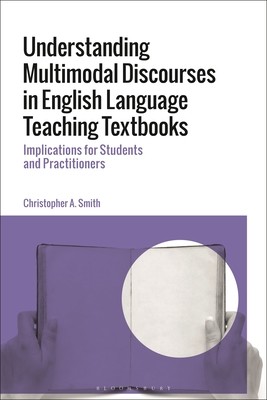
- We will send in 10–14 business days.
- Author: Christopher A Smith
- Publisher: Bloomsbury Publishing PLC
- ISBN-10: 1350256951
- ISBN-13: 9781350256958
- Format: 15.6 x 23.4 x 1.6 cm, kieti viršeliai
- Language: English
- SAVE -10% with code: EXTRA
Understanding Multimodal Discourses in English Language Teaching Textbooks (e-book) (used book) | bookbook.eu
Reviews
Description
Textbooks are indispensable components and in some case the cornerstones of the mission of English Language Teaching (ELT). However, they are artefacts of a pedagogical culture that rarely echo the concerns of their most prolific consumers: teachers and students. This book offers a useful framework for evaluating ELT textbooks from a critical discourse perspective; one that is based on sound current research but also offers practical guidance to teachers.
Building from a foundational understanding of ELT textbooks, the author presents a systematic procedure to critically analyze their multimodal discourse, examine how those discourses are negotiated between teachers and students in class, and measure how those consumers privately value the lessons. The book provides teachers with the tools they need to select and adapt materials based on critical multimodal discourse analysis, where not only the text but the pictures, websites, audio, visual elements too are subjected to a process which can reveal underlying ideologies, assumptions, omissions and reifications. The triangulated approach, demonstrated in a series of vignettes featuring Korean university students and native-English-speaking instructors, can inform textbook choice, instigate change, and inspire lesson re-contextualization to best suit the needs of its primary consumers.
EXTRA 10 % discount with code: EXTRA
The promotion ends in 22d.13:20:58
The discount code is valid when purchasing from 10 €. Discounts do not stack.
- Author: Christopher A Smith
- Publisher: Bloomsbury Publishing PLC
- ISBN-10: 1350256951
- ISBN-13: 9781350256958
- Format: 15.6 x 23.4 x 1.6 cm, kieti viršeliai
- Language: English English
Textbooks are indispensable components and in some case the cornerstones of the mission of English Language Teaching (ELT). However, they are artefacts of a pedagogical culture that rarely echo the concerns of their most prolific consumers: teachers and students. This book offers a useful framework for evaluating ELT textbooks from a critical discourse perspective; one that is based on sound current research but also offers practical guidance to teachers.
Building from a foundational understanding of ELT textbooks, the author presents a systematic procedure to critically analyze their multimodal discourse, examine how those discourses are negotiated between teachers and students in class, and measure how those consumers privately value the lessons. The book provides teachers with the tools they need to select and adapt materials based on critical multimodal discourse analysis, where not only the text but the pictures, websites, audio, visual elements too are subjected to a process which can reveal underlying ideologies, assumptions, omissions and reifications. The triangulated approach, demonstrated in a series of vignettes featuring Korean university students and native-English-speaking instructors, can inform textbook choice, instigate change, and inspire lesson re-contextualization to best suit the needs of its primary consumers.


Reviews